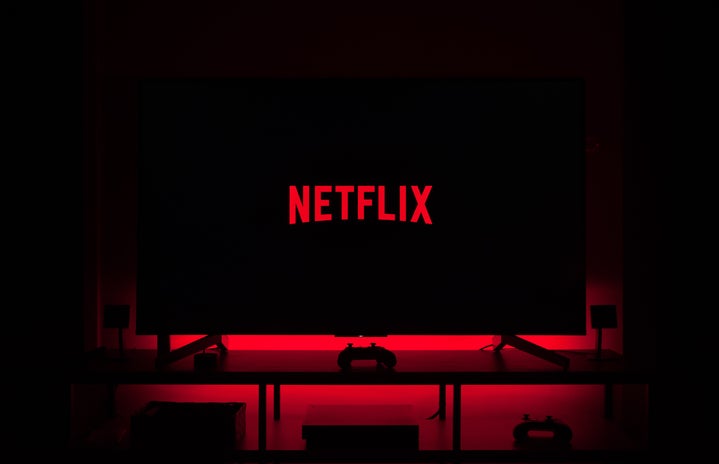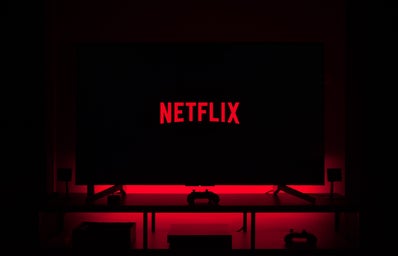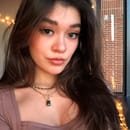As soon as I saw the trailer for Fate: The Winx Saga on Netflix’s upcoming shows tab back in December, I started counting down the days until its release. Watching the trailer dug up fond memories of a badass group of fashionistas: Bloom, Stella, Musa, Flora, Techna, and later Aisha—the girls who made up the Winx Club.
If femme cartoons weren’t your thing in the early to mid-2000s, the Winx Club was an Italian animated show that took over the world and the minds of little children. What made the show special was the diversity of the female characters. Each girl was from a different planet and with that, there was the representation of different races. Musa’s appearance mimicked an Asian girl, Flora’s a Hispanic girl, Aisha’s a black girl, and the rest presented as white girls. As a biracial person who’s half Filipino myself, Musa has always been one of my favorites. Now, looking back at the original show, her character is even more appealing because she deviates from the typical Asian stereotypes so often portrayed in the media.
But besides the cartoon being groundbreaking in terms of racial diversity, each Winx Club member also had their own unique interests. From technology to music to feminism or fashion, the girls in the Winx Club showed Gen Z that interests and hobbies aren’t gendered. They also taught my generation that being a strong woman in a man’s world doesn’t require sacrificing your femininity. Each member of the original Winx Club was an example to young girls that you can be strong, kick-ass, and look stylish while doing it. In essence, they were a beautiful example of embracing any definition of what it meant to be a girl.
These fond memories fueled the excitement I felt for the reboot. That excitement immediately died after watching the first episode. I felt suckered. Fate: the Winx Saga was nothing like the Winx Club show of my childhood. I would even say that the only similarities between the two shows are their names. If Fate: the Winx Saga wasn’t called Winx it might actually be a decent TV show. Especially with this trend of dark and angsty teen dramas becoming popular. Don’t get me wrong, the main character would still be unlikeable, but I have to give them props for giving the plot an air of mystery curious viewers can get caught up in and setting up for a more dramatic and hopefully action-packed second season.
Honestly though, if you are watching the show hoping it gets better and begins to align more with the original stop watching now, you’ll only be disappointed. Because it doesn’t ever begin to more closely resemble the original Winx Club. With that said, here is my comparative and therapeutic list of all the reason’s Fate: the Winx Saga was a disappointment.
1. The New Reboot Isn’t About a Group of Girls!
Yes. They turned Winx Club, a show about a group of six best friends, into a show about Bloom… and her suitemates. The girls in the live-action version of Winx don’t truly become friends until the last episode. They don’t find each other and bond because they truly enjoy each other’s company but instead are forced together because of their living situation. The only girls who are friends throughout the series are Terra and Musa. Aisha and the other girls attempt to become friends with Bloom but she doesn’t trust them and only turns to them when she needs something. It was this very one-way “friendship” that was most heartbreaking about the plot. In the original show, the friendship of so many diverse people was a pillar and in the live-action version, all they did was lay a wobbly foundation and possible redemption for a second season.
2. Where is Flora?!
Yes, I can hear it now, the sobs of disappointed viewers everywhere, I hope you’re proud of yourself Netflix… In the show, Flora is replaced by her “cousin,” Terra. Yes, Terra is still an earth fairy but really that’s where the similarities end. First of all, Flora, or the character Terra who she was replaced with no longer resembles a Hispanic girl and is instead another white character. I understand that Netflix was trying to be inclusive in terms of body types but they could’ve done that without whitewashing the group’s earth fairy.
3. Musa Goes From Music Fairy to Mind Fairy
One of the reasons I loved Musa growing up was because she was so spunky! Grooving to music and a bold sense of style, Musa was a representation of an Asian character I had never seen before and haven’t seen much of since. Asian women are thought of as meek, demure, quiet, and weak. Musa was none of those things. In fact, her style and bubbly personality was the opposite of those stereotypes. But in Fate: the Winx Saga, Musa isn’t a music fairy anymore—she doesn’t wear headphones to jam out. She is a mind fairy who wears headphones to escape from feeling the emotions of everyone around her. Not only have her powers gone from fun and full of life to darker and more angsty but so has her personality. Netflix’s new Musa while still a likable character, is so much darker and angstier than the original. The dimming of her light and everything she stood for in the Netflix reboot was such a disappointment. I can only hope they expand her powers and let her be more joyful and free in the next season.
4. Fairies without Wings…
In the very beginning of the series, Bloom has a conversation with the headmistress, Farah Dowling, where Ms. Dowling explains that fairies have evolved out of needing wings… excuse me! The show is called Winx! There are wings according to everyone’s powers on the opening title page. Why did they take away the fairy’s wings until the last episode?! Especially because with today’s technology beautiful wings can definitely be animated! Didn’t Netflix hear about Carnival?
5. Token Big Girl
Also: if the goal of ditching Flora for Terra was body diversity (which I am all for) why is Terra the only example of a different body type? Yes, Stella is taller than the average woman but this is not Tall Girl, that’s not the most pressing type of body diversity the media is needing and lacking. Bloom, Aisha, Musa, and Stella are all thin and curvy—society’s traditional beauty standard and Hollywood’s go-to. Yes, the media is all about using beautiful people as actors, but everybody type is beautiful and they all deserve representation in the media. So, if Netflix were going to rewrite an entire main character in the name of adding different body types, it would have been nice if there was actually a variety of body types instead of just adding a token big girl to check an arbitrary box and call the show inclusive and diverse. Having one character that looks different is not truly representing all body types because there are more than just big and thin-hourglasses. There is such a range—broader shoulders, smaller boobs, and more muscular physiques to name a few are all beautiful representations of womanhood that deserve to be shown and celebrated. As a part of the itty-bitty-titty committee myself, I’d especially love to see a character in mainstream media who has smaller breasts and is still confident and sensual.
6. Missing the Point of Racial Diversity
The lack of racial diversity was briefly mentioned with Netflix whitewashing Flora and her replacement. But this common issue is especially devastating because diversity was such a pivotal aspect of the Winx Club, so taking that away is taking away from the show’s essence! Yes, Netflix kept Aisha’s character black and the actress who played Musa, Elisha Applebaum, is part Singaporean so she does have Asian descent. I have trouble letting Netflix call this cast diverse. The issue of Musa’s casting is complicated. As a biracial person myself I understand the struggle of never feeling enough of one culture to fit in, and I would never want to invalidate my own experiences and right to one of my, Applebaum’s, or any other biracial or multiracial person’s culture. However, Applebaum is very white presenting, and in the original show a large aspect of Musa’s identity was inspired and representative of Asian culture and style. In multiple seasons, Musa’s animated character has hime bangs, a Japanese trend. Some of her civilian clothes also have distinctly Asian inspired collars and other details. While I support Applebaum’s claim to the Asian identity it would have been wonderful to see an Asian woman play Musa instead of an actress who was so white-passing. In our society, white women are the standard of beauty. American’s have a deep-rooted obsession with lighter colored skin being more desirable. This obsession has translated over into Asian cultures as well because everything is so Eurocentric. Because of this standard of beauty and with the original shows embrace of diversity, it would have been meaningful to many long time fans to see Netflix embrace the culture of Musa’s character and have racial diversity. Because combined with the whitewashing of Flora/Terra, the use of Applebaum seems like a cop-out to me. They are using an Asian woman, but one who closely fits the normative standard of beauty. Their use of a white-passing actress also taints Aisha’s character and at times leaves me feeling like they used her to be the token black friend.
Despite all of my pet peeves with the show, and how much it disappointed me, if they release a season two I will probably still watch it… if only to find out if the series redeems itself. And have another good rant along the way. <3



